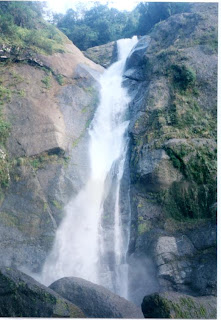For other uses, see Apayao (disambiguation).
Apayao is a landlocked province of the Philippines in the Cordillera Administrative Region in Luzon. Its capital is Kabugao and borders Cagayan to the north and east, Abra and Ilocos Norte to the west, and Kalinga to the south. Prior to 1995, Kalinga and Apayao used to be a single province named Kalinga-Apayao, until they were split into two to better service the needs of individual native tribes in the provinces.
People and culture
Economy
 Geography
GeographyApayao is subdivided into 7 municipalities.
Physical
Apayao was among the earliest areas penetrated by the Spaniards in the Cordilleras, but the region, inhabited by the Isneg tribe, remained largely outside Spanish control until late in the 1800s. As early as 1610, the Dominican friars established a mission in what is now the town of Pudtol. In 1684, the friars again made vain attempts to convert the people and established a church in what is now Cabugao. The ruins of the early churches in Pudtol and Cabugao still stand as mute testimony to the failed attempts to occupy Apayao.
The Spanish authorities were then able to establish the comandancias of Apayao and Cabugaoan in 1891, which covered the western and eastern portions of what is now Apayao. The comandancias, however, failed to bring total control and the Spanish government only maintained a loose hold over the area.
The Americans established the Mountain Province on August 13, 1908, with the enactment of Act No. 1876. Apayao, along with Amburayan, Benguet, Bontoc, Ifugao, Kalinga, and Lepanto, became sub-provinces of this new province. Before this, Apayao had been a part of Cagayan province.
After being a sub-province for almost 60 years, on June 18, 1966, the huge Mountain Province was split into four provinces with the enactment of Republic Act No. 4695. The four provinces were Benguet, Mountain Province, Kalinga-Apayao and Ifugao. Kalinga-Apayao became one of the provinces of the Cagayan Valley region.
On July 15, 1987, the Cordillera Administrative Region was established and Kalinga-Apayao was made one of its provinces. Finally, on February 14, 1995, Kalinga-Apayao was split into two distinct provinces with the passage of Republic Act No. 7878.
It may be no coincidence that the outline of Apayao (and the former Kalinga-Apayao) resembles a bust of a man akin to former dictator Ferdinand Marcos (looking toward his home province, Ilocos Norte) whom they called as the "Great Profile" during the Marcos Era.
 Lefthit
Lefthit
No comments:
Post a Comment